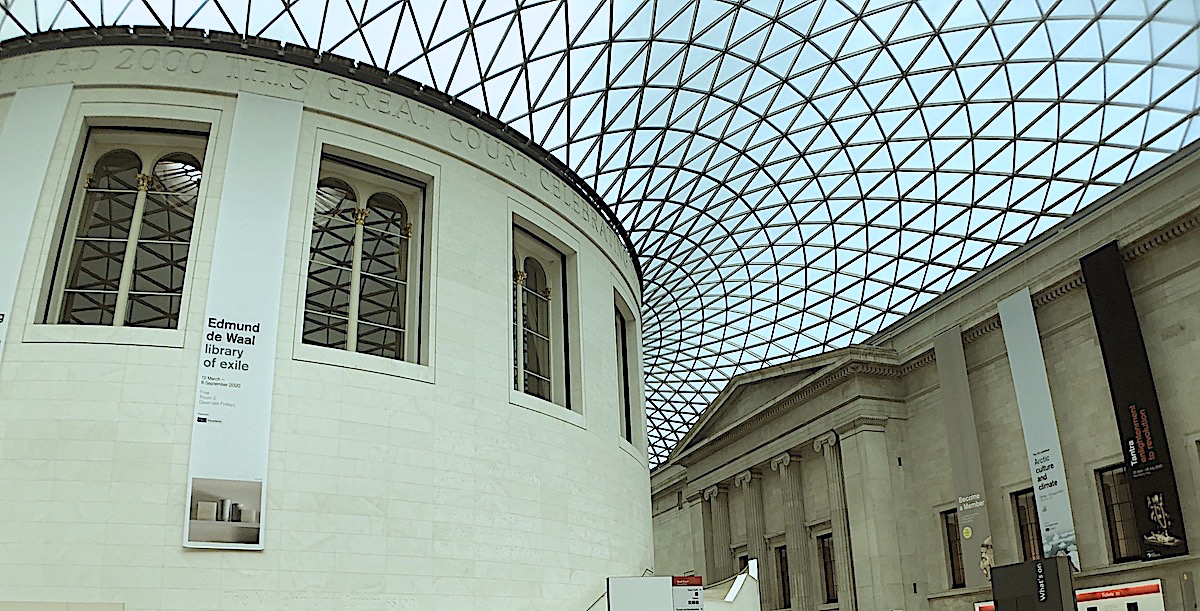The British Museum has sacked a senior curator who worked at the Museum for more than 30 years after priceless jewellery and gems vanished from a locked storage cupboard. Peter John Higgs, 56, was dismissed this summer, pending a police investigation, after several items were either “missing, stolen or damaged”. It is now thought that over 1200 items were taken, many sold for a fraction of their value on auction websites like eBay.
British Museum director Hartwig Fischer who resigned last month, said the museum would “throw our efforts into the recovery of objects”. He added: “This is a highly unusual incident. I know I speak for all colleagues when I say that we take safeguarding all the items in our care extremely seriously. “We have already tightened our security arrangements and are working alongside outside experts to complete a definitive account of what is missing, ” The museum added that legal action would be taken against the staff member who was fired. The Economic Crime Command of the Metropolitan Police is investigating, but no arrests have been made. The British Museum has also started an independent review of security. An antiquities expert is said to have tipped off staff at the museum in 2020 after noticing a piece of Roman jewellery being offered for sale on eBay, according to the Daily Telegraph.
The British Museum is home to a vast and valuable collection of artefacts worldwide, making it an attractive target for theft. Over the years, the museum has implemented stringent security measures to safeguard its treasures and prevent unauthorised access.
There have been several thefts and attempted thefts at the British Museum throughout its history. Theft of the Portland Vase (1845): One of the most famous thefts in the history of the British Museum occurred in 1845 when the Portland Vase was shattered by a man named William Lloyd. The Portland Vase is an ancient Roman glass vessel that is considered a masterpiece of ancient art. Lloyd, a labourer, was reportedly under the influence of alcohol when he broke the vase during a visit to the museum. He was subsequently arrested and tried for the vandalism. The vase was restored painstakingly, remaining a key artefact in the museum’s collection.
The Attempted Theft of the Rosetta Stone (1914): 1914, Pierpont Morgan attempted to steal the Rosetta Stone from the British Museum. The Rosetta Stone is a significant ancient Egyptian artefact crucial in deciphering hieroglyphs. Morgan, an American, concealed himself in the museum overnight to steal the stone. However, his attempt was thwarted when a museum employee discovered him. He was arrested, and the Rosetta Stone remained safely in the museum’s possession.
The British Museum is one of the world’s most renowned and oldest museums in London. Founded in 1753, it holds a vast collection of art and artefacts from various cultures and historical periods, making it a significant institution for studying and appreciating human history, culture, and art.
The museum’s collection spans various disciplines, including archaeology, anthropology, art history, and more. Some of the most notable aspects of the British Museum include:
Ancient Artifacts: The museum houses an extensive collection of ancient artefacts from worldwide civilisations. This includes items from Ancient Egypt, Mesopotamia, Greece, Rome, and other cultures. The Rosetta Stone, the Elgin Marbles (also known as the Parthenon Sculptures), and the Egyptian mummies are among its most famous pieces.
Cultural Artifacts: The museum features objects representing diverse cultures and periods, including items from Africa, the Americas, Asia, and Oceania. These artefacts provide insights into various societies’ traditions, beliefs, and daily lives.
Prints and Drawings: The British Museum has an impressive collection of prints, drawings, and manuscripts, including works by famous artists such as Leonardo da Vinci, Michelangelo, and Rembrandt.
Library and Research: Besides its physical collections, the British Museum has a library that contains a vast array of books, manuscripts, and documents, making it an essential resource for researchers and scholars.
Temporary Exhibitions: The museum hosts temporary exhibitions focusing on specific themes, periods, or artists. These exhibitions often combine pieces from various parts of the collection to create new narratives and contexts.
Learning and Outreach: The British Museum offers educational programs, lectures, workshops, and events to engage visitors of all ages and backgrounds. It’s also known for its digital initiatives that allow people to explore the collection online.
The British Museum’s location in the heart of London and its iconic architecture contribute to its status as a cultural landmark. Visiting the museum’s permanent collections is free, though there might be charges for special exhibitions. The British Museum is crucial in promoting cultural understanding, historical appreciation, and global heritage through its diverse collection and educational initiatives.

